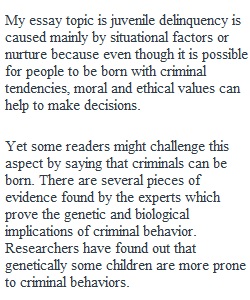


Q COUNTER-ARGUMENT What is a Counter-Argument? A counter-argument is an argument opposed to your thesis. It expresses the view of a person who disagrees with your position. Where do I put a Counter-Argument? A counter-argument can appear anywhere in your essay, but it most commonly appears: • As a section or paragraph just after your introduction, in which you lay out the expected reaction or standard position before turning away to develop your own. • As a section or paragraph just before the conclusion of your essay, in which you imagine what someone might object to what you have argued. How do I Introduce a Counter-Argument? Counter-argument in an essay has two stages. In this first stage, you turn against your argument to challenge it. The following is a way to approach introducing counter-arguments and templates for structuring them: Imagine a skeptical reader (this will help you begin your transition into the counter-argument): • “Yet some readers may challenge the view that _________.” • “After all, many believe _________.” • “Of course, many will probably disagree with this assertion that _________.” Then, after introducing your counter-argument with a phrase similar to the ones listed above, you state the case against yourself as briefly but as clearly and forcefully as you can, pointing to evidence where possible (do so in a maximum of 3-4 sentences). REBUTTAL How Do I Provide a Rebuttal for a Counter-Argument? In the second stage of the counter-argument and rebuttal, you turn back to re-affirm your argument. You may consider the following rebuttal tactics and models for structuring them: 1) Quote acknowledged experts that support your position • While many may see this argument as flawed, ____________John Smith, an expert in his field, also finds_________. 2) Pointing out faulty assumptions in your critic’s arguments where facts are wrong or the analysis is incorrect: • Proponents of X are right to argue that _________. But they exaggerate when they claim that _________. OR • While it is true that _________, it does not necessarily follow that _________. What follows is an example of an argument, counter-argument, and one possible rebuttal to the counter-argument: Thesis: The primary focus in medical end-of-life decisions should be on patient consent, rather than doctor intention, because it is not a breach against a patient’s rights if s/he consents to the termination of their life. Counter-argument: Terminally ill patients are likely to be depressed, and therefore, unable to consent to their hastened death in a balanced or acceptable way. Rebuttal: Depression can be managed. The relevance of depression must be made on a case-by-case basis. Depression does not warrant a general rule prohibiting patients from consenting to a hastened death. *Note that in an essay, the counter-argument and rebuttal paragraph will be more developed (i.e. the paragraph will be more than 2 sentences).
View Related Questions